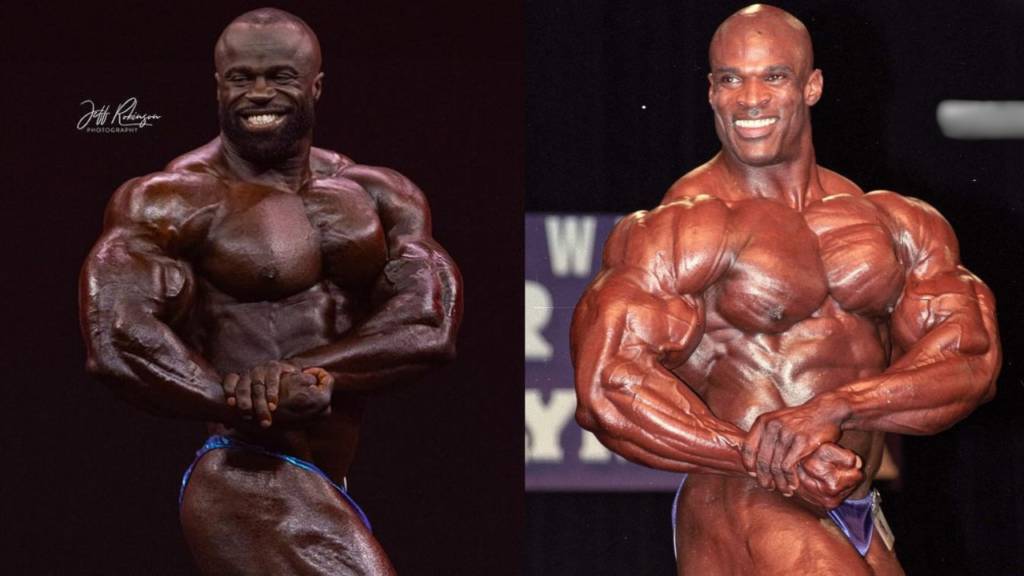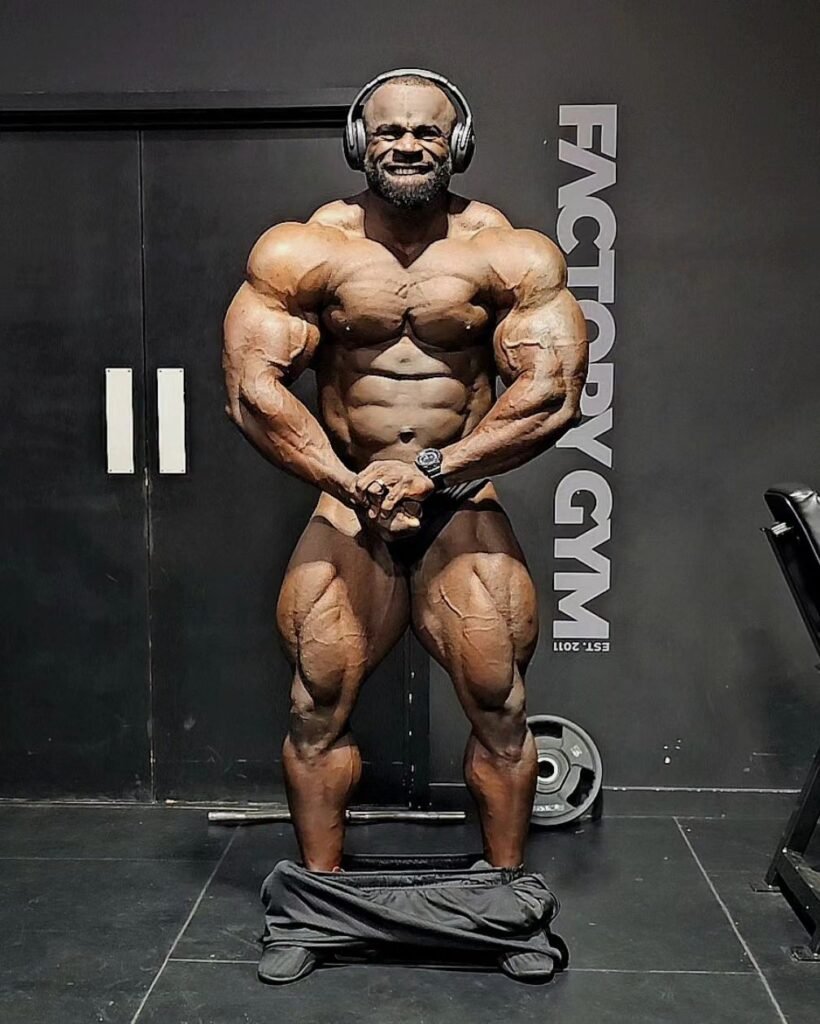In the world of bodybuilding, debates about the greatest physique often center around legendary figures, and two names that frequently emerge in these discussions are Ronnie Coleman and Samson Dauda.
While Ronnie Coleman is widely regarded as one of the greatest bodybuilders of all time, Samson Dauda is seen as a rising star with immense potential.
In this comparison, we’ll delve into a specific moment in their respective careers—the 2002 version of Ronnie Coleman against the 2023 rendition of Samson Dauda.
Icons of Iron

Ronnie Coleman, an eight-time Mr. Olympia, is a behemoth in the bodybuilding realm. His unparalleled size, symmetry, and conditioning have etched his name in the annals of the sport’s history.
Samson Dauda, on the other hand, represents the new generation—a promising athlete with a sculpted physique and the potential to make waves in bodybuilding’s elite circles.
Setting the Stage: 2002 vs 2023
The chosen battleground for this comparison is the 2002 Prague Pro for Ronnie Coleman and the 2023 season for Samson Dauda.
It’s crucial to note that each bodybuilder brings a unique set of attributes to the stage, and this analysis aims to appreciate their strengths and differences.
Front Lat Spread: A Battle of Ripped Physiques

The front lat spread showcases width, symmetry, and overall conditioning. In 2002, Ronnie Coleman displayed unparalleled muscle separation and conditioning.
His arms, quads, and midsection showcased a level of detail rarely seen in his era. Samson Dauda, in 2023, counters with a spread over a similar base. His conditioning, especially in the abdominal and pectoral regions, draws attention.
While Ronnie Coleman’s raw muscle separation is a sight to behold, Samson Dauda’s peeled look suggests the evolution of conditioning standards.
Side Chest: The Symmetry Test

Moving to the side chest pose, symmetry takes center stage. Ronnie Coleman’s arms, though not perfectly symmetrical, exude mass and power.
Samson Dauda, in a slightly tilted angle, presents a more symmetrical appearance in this shot.
The discussion here extends beyond mere comparison it reflects the evolution of bodybuilding standards over the years.
Side Triceps: A Pose of Definition
The side tricep pose accentuates the triceps, deltoids, and overall arm development. Ronnie Coleman, with his characteristic mass and conditioning, showcases a powerful tricep.
Samson Dauda, however, presents a well-defined triceps and deltoid, hinting at the advancements in muscle definition that the sport has seen over time.
Back Double Biceps: The King’s Domain

The back double biceps pose is where Ronnie Coleman’s dominance often reaches its zenith. His traps, lats, and overall back development are often considered the gold standard.
Samson Dauda, while commendable in width, faces a monumental challenge against the sheer mass and detail of Ronnie Coleman’s back.
Rear Lat Spread: Peaks and Valleys
In this pose, Ronnie Coleman’s traps rise like mountains, emphasizing his unparalleled muscularity. Samson Dauda, wider in appearance, showcases a commendable hamstring development.
While Samson Dauda excels in certain aspects, Ronnie Coleman’s back remains an impenetrable fortress.
Abs and Thigh: A Relaxed Encounter

In a more relaxed setting, the ABS and thigh pose allows a comparison of midsections and leg development. Despite a purported decrease in size and conditioning in 2002, Ronnie Coleman displays a midsection and quads that overpower the scene.
Samson Dauda, structurally similar, competes well but faces the colossal challenge of standing against the king.
Most Muscular: A Missed Opportunity
The most muscular pose, often a spectacle of power and density, sees a rare slip from Ronnie Coleman in 2002. Samson Dauda, although perhaps missing an opportunity to showcase his full potential, appears strode and conditioned.
The absence of this mandatory shot in 2002 slightly muddies the waters of direct comparison.
Conclusion: Legends and Legacies
In the clash between Ronnie Coleman and Samson Dauda, each pose tells a story of evolution in bodybuilding. Ronnie Coleman’s 2002 version, though allegedly not at his peak, retains an aura of invincibility.

Samson Dauda, in 2023, represents the progress and refinement of the sport, displaying a level of conditioning and symmetry that aligns with contemporary standards.
It’s crucial to appreciate the context—Ronnie Coleman, the eight-time Mr. Olympia, facing off against a rising star like Samson Dauda.
The comparison serves not to diminish the achievements of either but to highlight the shifts in bodybuilding aesthetics and the ongoing legacy of the sport.
In the end, debates about the greatest bodybuilder will persist, and while Ronnie Coleman’s reign is etched in history, athletes like Samson Dauda carry the torch forward, contributing to the ever-evolving narrative of bodybuilding excellence.
The Clash of Titans is not just a comparison of physiques it’s a celebration of the rich tapestry that is bodybuilding history.